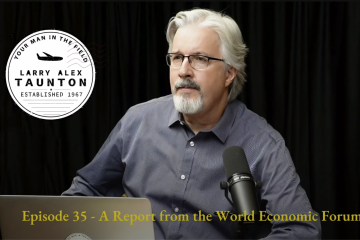Stories of grace. Most of us like to hear them and feel encouraged by them. We attach other words like compassion, kindness, and love to the meaning behind the word grace. As Christians, we also believe forgiveness is often involved where grace is in evidence. Many times in recent months I have been in search of the deep meaning of the application of grace. And not surprisingly, the action is encompassed in the person of Jesus Christ.
When I think of the grace Jesus showed to repentant sinners, several stories have impressed me. The first is the story of the adulterous woman found in John 8:1-11. The second is the story of the prodigal son from Luke 15:11-32. The third is the story of Peter’s denial of Jesus contained in all four Gospels and restoration by Jesus in John 21. And the fourth is the healing of the demon-possessed man in Luke 8:26-39.
In the last two years, I have done an intense study on what Jesus did in these stories and what we are to learn from it. In each of these stories the individual involved was repentant of their sin. This seems significant to me. Each one had experienced the pain of their failure and sin already. Scripture does give direction on how to help a person who needs to be confronted with their sin and how to restore them (Galatians 6:1-2), but these stories are different. They already knew the deep grief of sin. So, as I looked at Jesus’ response to them, his words are wonderful.
For the adulterous woman he says: “Let him who is without sin among you be the first to throw a stone at her” and “Woman, where are they? Has no one condemned you?” and ”Neither do I condemn you; go, and sin no more.”
And then, to her shock, the great teacher gently forgives and restores her. And it strikes me greatly that Jesus never condemns her. He doesn’t join the mob shouting out her sin. He tells her to sin no more.
Can you imagine how she felt? She is publicly humiliated (while the other guilty party somehow escaped this humiliation, so she is standing alone in her shame). She is being accused and shouted at and I’m sure expects to momentarily be stoned to death. And then, to her shock, the great teacher gently forgives and restores her. And it strikes me greatly that Jesus never condemns her. He doesn’t join the mob shouting out her sin. He tells her to sin no more. What a beautiful scene.
For the Prodigal Son we have a picture of incredible restoration. He slid slowly and deliberately into a pigpen of his own making. He had wonderful blessing and love to begin with, but made so many destructive choices in his life that now pig’s food looks good to him. But when he “comes to his senses,” he heads back to his father hoping to convince him to just let him be a lowly servant. His father has always been longingly waiting and watching for his son to return. When he sees his son far off, but on the road back home, he races to embrace him, forgives him, and restores him to the position of a beloved son. What an incredible picture of hope to those who have gone down similar paths and experienced the same moment of “coming to their senses” and longing for forgiveness and restoration in their lives!
Peter’s story has been particularly important to me. It was the worst of sins: Peter denied even knowing Jesus at a time of such great duress Scripture says Jesus’ “soul was very sorrowful, even to death.” (Mark 14:34). Jesus told Peter beforehand he would deny him, but Peter, full of his own pride and sense of strength, vehemently denied it. Jesus responded to him, “Satan demanded to have you, that he might sift you like wheat, but I have prayed for you that your faith may not fail. And when you have turned again, strengthen your brothers.”
As we all know, Peter did exactly as Jesus predicted and then “went out and wept bitterly.” But after Jesus’ resurrection a marvelous conversation is recorded. Jesus, without feeling the need to lay into Peter for his sin, asked Peter if he loves him and commissioned him saying, “Feed my lambs.” This was the answer to the prayer Jesus prayed earlier: “When you have turned again, strengthen your brothers.” Jesus didn’t speak a single word of condemnation. And he didn’t say, “from now on, your role is much less than it was.” Jesus restored Peter and commissioned him to even greater ministry. That’s amazing grace!
And then the story of the man Jesus healed who was possessed by a “legion of demons.” After Jesus cast out the demons that entered a herd of pigs and drowned themselves, we are told the man who previously lived naked and among tombs, was sitting at the feet of Jesus, clothed, and in his right mind. The people were so fearful of the power of this healing they begged Jesus to leave. The healed man “begged that he might be with him, but Jesus sent him away, saying, ‘Return to your home, and declare how much God has done for you.’ And he went away, proclaiming throughout the whole city how much Jesus had done for him.” What a beautiful story of restoration. Again, there is no record of Jesus deciding he needed to condemn the man for getting in that situation to begin with. Clearly the man knew the consequences of his sin. Jesus healed, forgave, and restored.
So, as I contemplated what grace and forgiveness look like in Jesus’ example, I learned powerful lessons. It is clear, Jesus does not condemn or lay a load of guilt on a repentant person. When forgiveness is given, that doesn’t include continued reminders of the sin. With Jesus, things move from forgiveness to restoration immediately. “Go, and sin no more” … “Feed my lambs” … “Proclaim what Jesus has done for you.” Wonderfully, Jesus knows our brokenness, sin, and failures, and He desires to continue to use us for his own perfect purposes. God pursues His children. He longs for us to turn to Him and seek His grace, forgiveness and love, and He rejoices when we do.
If this is Jesus’ example, what should the response be from those of us who claim to be His followers? I realized early on in my quest to discover what true grace and forgiveness looks like that I could not continue to lay on a load of guilt or accuse of past sins with a person seeking forgiveness. Plus, when I need forgiveness, I don’t want someone to do that to me. None of us can undo things in our past. Sometimes there can be deep regret for the things we have done, or said, or choices we have made. We never get a do-over. It is truly only through God’s magnificent plan of salvation, which is all about our sin, forgiveness, grace, and restoration, that we have any hope at all.
God can forgive and heal and restore. And we can be a part of it if we follow His plan. However, we can exclude ourselves from this blessing too, if we refuse to submit ourselves to Him by our hard-heartedness and self-righteousness.
I can testify strongly that it is real! God can forgive and heal and restore. And we can be a part of it if we follow His plan. However, we can exclude ourselves from this blessing too, if we refuse to submit ourselves to Him by our hard-heartedness and self-righteousness. And it’s a real temptation we all face on all sides of this reality of life. We can choose to not repent. We can choose to lay blame on others to excuse ourselves of our own sin. We can choose to not forgive. We can choose to be angry and bitter. We all have choices. But we all also have the choice to follow God’s ways (and He knows us so well He knew we needed a way of hope regarding our sin and brokenness).
Some of life’s lessons in the past many months have been hard. But learning the wonderful ways that God has given us grace and love has been worth every trial God has put before us. As is evident in the stories above about Jesus’ grace, when we have experienced it we are to proclaim what Jesus has done for us. Let me strongly praise Him for that here!


